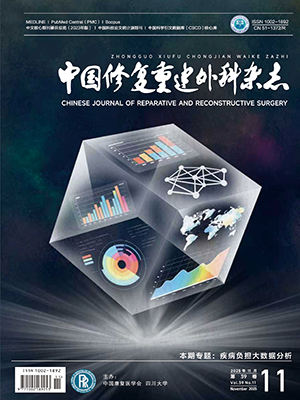To introduce a micturition alert device dedicated to neurogenic bladders. Methods The design and mechanism of the micturition alert device were explained, the effectiveness was tested in a cranine experiment. Results The micturition alert device consisted of a permanent magnet sutured on the anterior bladder wall and a warning unit sutured on the
inferior abdominal wall. The warning unit was assembled with a compass-l ike switch, a power supply, a buzzer and a power switch. Bladder volume determined the position of the magnet which determined the magnetic field at the point of the warning unit. The change of magnetic field was read by the warning unit. With increasing bladder volume from initial state to 200 mL in 8 dogs, the magnet moved cranially 32.8 mm averagely (from 31.3 mm to 34.1 mm) and the hand of warning unit turned 52° (from 47° to 57°). The value of the warning unit was correlated positively to the bladder volume (r =1.0, P lt; 0.01). If the desired bladder volume was determined as 150 mL to activate the warning unit to alarm in advance, the fullness of bladder was 147.6 mL averagely from135 mL to 160 mL, with an error less than 15 mL (10%). Conclusion The micturition alert device including a warning unit and permanent magnet could monitor bladder volume continuously and alarm in time for the patients with loss of micturition desire. It is simple, easily-made, cheap and conveniently used. It is worth of further study.
Citation: WANG Jianhuo,HOU Chunlin,ZHANG Wei,ZHENG Xianyou,XU Zhen,WANG Wanhong,LIN Haodong.. MICTURITION ALERT DEVICE DEDICATED TO NEUROGENIC BLADDERS. Chinese Journal of Reparative and Reconstructive Surgery, 2008, 22(5): 597-601. doi: Copy
Copyright © the editorial department of Chinese Journal of Reparative and Reconstructive Surgery of West China Medical Publisher. All rights reserved




